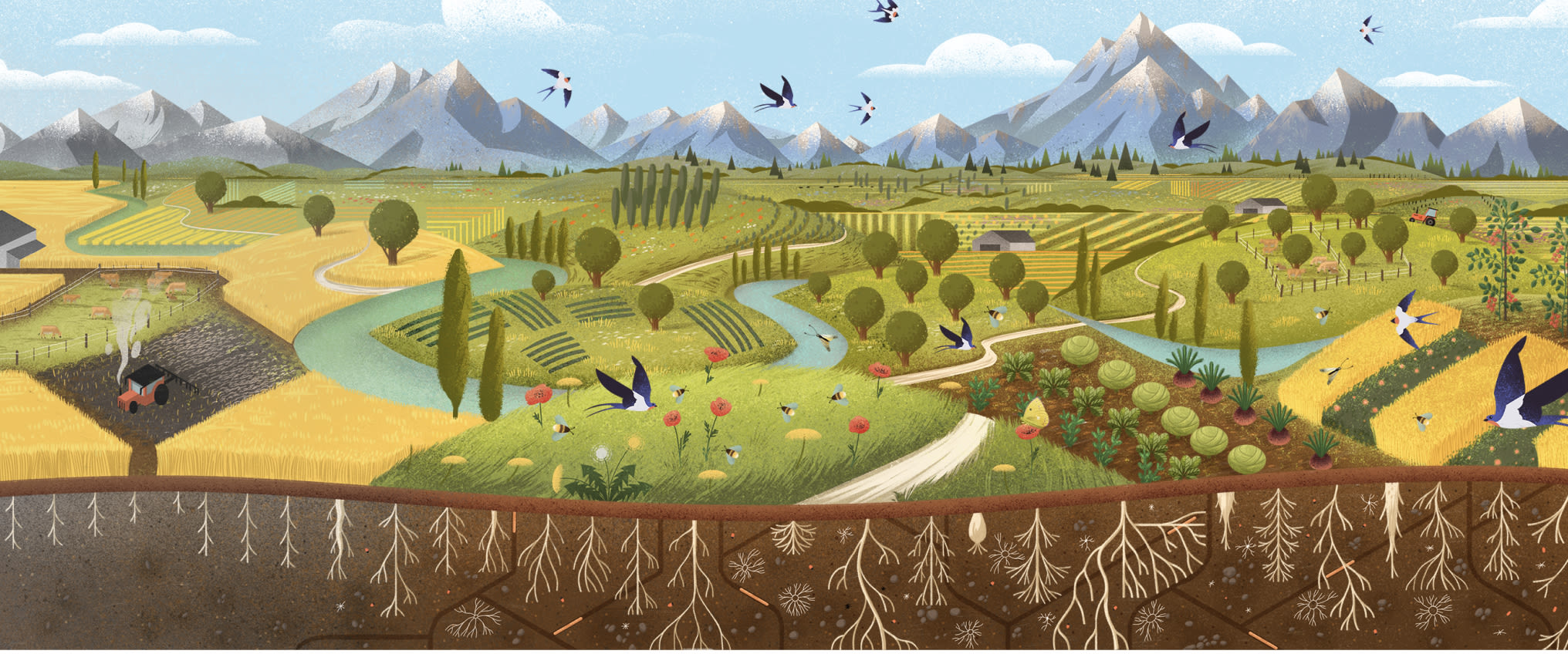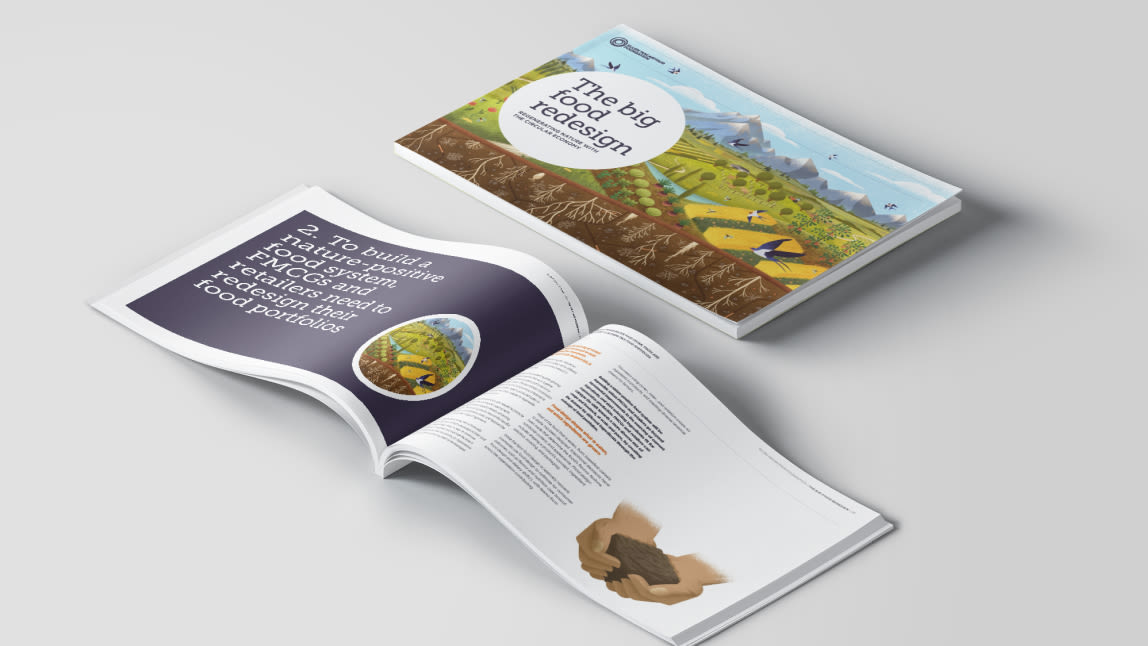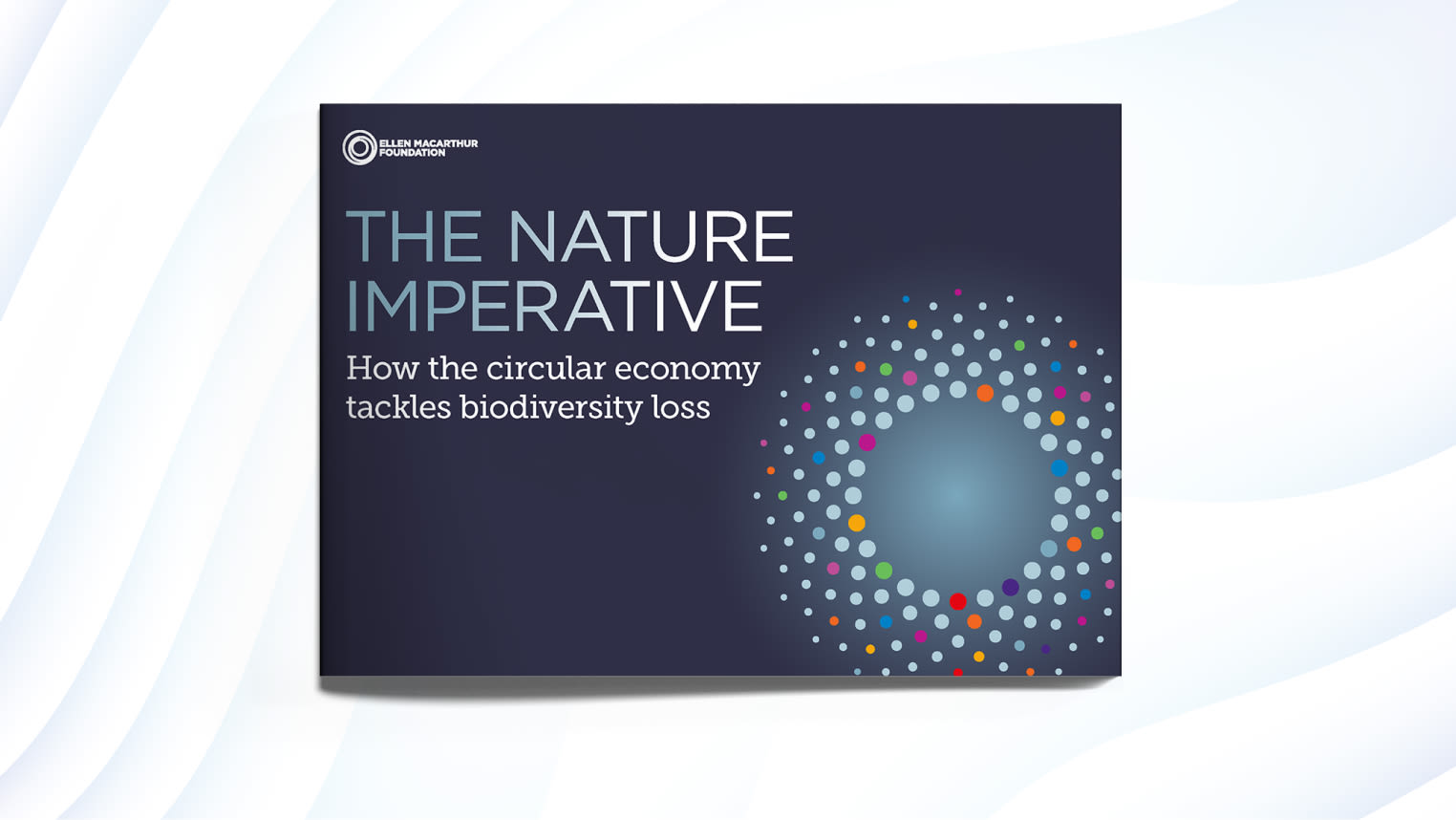September 21, 2021
The food industry has been identified as the primary driver of biodiversity loss and responsible for a third of global GHG emissions
Food brands and supermarkets have the power to make nature-positive food the norm
By rethinking the ingredients they use and how they're produced, they can provide choices that are better for customers, better for farmers, and better for the climate
A nature-positive plan for how the food industry can tackle today’s biodiversity and climate crises through the circular economy has been released by the Ellen MacArthur Foundation.
More than 90% of biodiversity loss is due to the extraction and processing of natural resources – a result of today’s degrading, wasteful, and polluting economy. In addition, 45% of greenhouse gas (GHG) emissions come from the way we make and use products and food. Much of this impact is caused by the food industry, which has been identified as the primary driver of biodiversity loss and responsible for a third of global GHG emissions.
Leading food brands and supermarkets have substantial influence on the food system: in the EU and UK, for example, 40% of agricultural land supplies ingredients to the top 10 food brands and supermarkets. Many of these players are currently part of the problem, but given their size and influence they can be, and need to be, part of the solution.
The big food redesign: Regenerating nature with the circular economy demonstrates how, through a new, design-led approach, food brands and supermarkets have the unique opportunity to make nature-positive food the norm. By rethinking the ingredients they use and how they're produced, they can provide choices that are better for customers, better for farmers, and better for the climate.
The Foundation’s founder and chair of trustees, Dame Ellen MacArthur, said: “Just like the clothes we wear and the products we rely on every day, our food is designed. Food businesses steer our choices on what we eat. From the beginning, they make decisions about how it tastes, how it looks and how good it is for us - and how it impacts nature. This means food businesses have an enormous opportunity to make nature-positive food mainstream.”
To realise this opportunity, food brands and supermarkets need to move beyond ‘better’ sourcing of current ingredients, and instead redesign their product portfolios. By combining four key ingredient selection and sourcing opportunities, they can contribute to a net-zero and nature-positive future that increases profitability for farmers, while tapping into growth opportunities driven by changing customer demand:
Diverse ingredients: Today, just four crops provide 60% of the world’s calories. To increase genetic diversity of crops and livestock, and therefore build food supply resilience, businesses can incorporate a broader range of ingredients in their product portfolios. For example, the culinary property of sweetness can be derived not just from sugar cane, sugar beet, or corn, but also from perennial crops such as date palm, carob, and coconut, and high intensity natural sweeteners such as monk fruit and stevia. The same reasoning applies to varieties. Planting a range of crop varieties such as population wheat can make wheat production globally more resilient to shocks.
Lower impact ingredients: ‘Quick wins’ are available by shifting from conventionally produced animal products to lower impact alternatives, as well as from higher impact crops to lower impact crops. Many businesses are already exploring the potential to switch from conventionally produced animal proteins to plant proteins. This study shows that the opportunity extends well beyond diversifying protein sources. For example, within the modelled geographies, replacing conventional wheat flour with pea flour in a breakfast cereal can reduce farm-level greenhouse gas emissions by 40% and farm-level biodiversity loss by 5%.
Upcycled ingredients: With a third of food being lost or wasted, upcycling innovations provide opportunities not only to avoid sending food and by-products to landfill, but also to turn them into high-value ingredients. The USD 46 billion upcycled food market is projected to grow at 5% annually. Brands and supermarkets can scale these solutions to tap into the growing market opportunity. Using upcycled ingredients alleviates pressure on land and maximises return on invested land, energy, and other inputs used to grow food.
Regeneratively produced ingredients: In recent years, leading businesses have recognised the environmental benefits of regenerative productionregenerative productionRegenerative production provides food and materials in ways that support positive outcomes for nature, which include but are not limited to: healthy and stable soils, improved local biodiversity, improved air and water quality.. It can lead to greater yields and compelling increases in farmer profitability. There is no one-size-fits-all approach and practices used will need to be reviewed over time. However, for all the ingredients modelled, a set of context-dependent practices have been identified that, on average and after a transition period, increase total food output and provide additional profitability for farmers, while generating significant climate and biodiversity benefits.
Marco Lambertini, Director General, WWF International, said: “Our future prosperity and survival depend on a living planet and our ability to create a nature-positive economy – one that operates within planetary boundaries and that helps us reverse nature loss and overcome the climate crisis. ‘The big food redesign’ study aligns with WWF's approach to food systems transformation, clearly showing that systemic action across production, consumption, and loss and waste is required to achieve a truly sustainable future.”
Dr Gunhild Stordalen, Founder & Executive Chair, EAT, said: “This study is a treasure trove. It pinpoints how fast-moving consumer goods businesses and retailers can drive real transformation in our food systems for the benefit of people and the planet, making money on the vanguard of change while they’re at it. As nations around the world, triggered by this year’s UN Food Systems Summit, chart their pathways to sustainable food systems by 2030, this study offers critical insights as to how food businesses can accelerate the urgent shifts that are required towards regenerative food production and healthy food consumption.”
For more information or to request an interview, please contact Gabriella Hewitt gabriella.hewitt@emf.org
Notes to Editor
About the Ellen MacArthur Foundation
The Ellen MacArthur Foundation is an international charity, committed to the creation of a circular economycircular economyA systems solution framework that tackles global challenges like climate change, biodiversity loss, waste, and pollution. It is based on three principles, driven by design: eliminate waste and pollution, circulate products and materials (at their highest value), and regenerate nature. that tackles some of the biggest challenges of our time, such as climate change and biodiversity loss. Driven by design, a circular economy eliminates waste and pollution, keeps products and materials in use, and regenerates natural systems, creating benefits for society, the environment, and the economy.
Further information: www.ellenmacarthurfoundation.org | @circulareconomy
Read the circular economy glossary: https://bit.ly/emf-glossary
About the Food Initiative
The Ellen MacArthur Foundation launched the Food initiative in June 2019, following the publication of the Cities and Circular Economy for Food report at the World Economic Forum Annual Meeting in Davos, January 2019. The Foundation’s Food initiative is working with key actors to stimulate a global shift towards a regenerative food system based on the principles of a circular economy.
Further information: www.ellenmacarthurfoundation.org/topics/food/overview
Assets All assets, including the report and guidelines can be found here.





